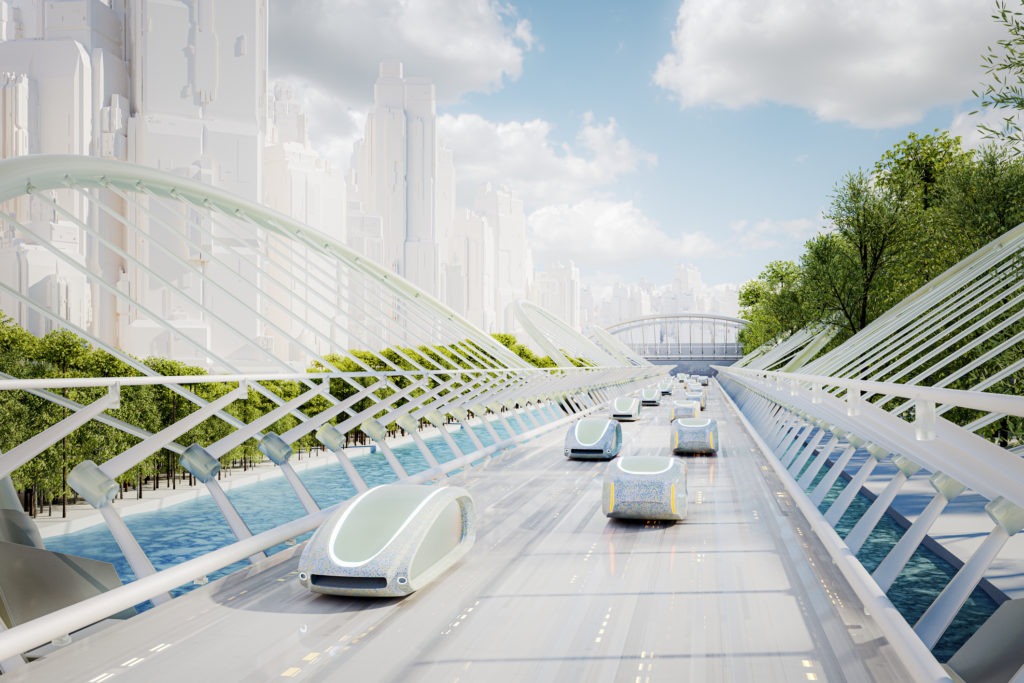When will fully-autonomous vehicles become a reality?
24 August 2022

Cities bustling with self-driving shuttles, packages posted autonomously at rural residencies, and commercial sites serviced by ‘empty’ vehicles. These scenes would seem right at home in some futuristic film, but how long until they become a reality? Autovista24 deputy editor Tom Geggus discusses vehicle autonomy with Terence Broderick, senior patent attorney at Murgitroyd.
Subscribe to the Autovista24 podcast and listen to previous episodes on Apple, Spotify, Google Podcasts and Amazon Music.
Show notes
What is an autonomous vehicle?
How might self-driving cars change us?
Should Automated Lane-Keeping Systems be labelled ‘self-driving’?
Germany wants to lead the autonomous-driving revolution
BMW expands its autonomous-driving infrastructure
Synopsis
Self-driving cars capable of operating without any human intervention are both a far-flung concept and a reality waiting just around the corner. Technically falling into SAE’s top tier of driving automation, Level 5, these vehicles should be capable of driving anywhere in any conditions.
Cooperation is key
Cooperation between a wide range of companies such as carmakers, service providers, and logistics firms, can provide plenty of opportunities for valuable hands-on experience with autonomous technology.
Motional and Lyft recently teamed up to offer an autonomous ride-hailing service in Las Vegas. Deploying ell-electric Hyundai Ioniq 5 robotaxis, the pair hope to offer a completely driverless experience next year.
‘Launching Motional’s all-electric IONIQ 5 on Lyft’s network in Las Vegas represents tremendous progress in our vision to make an electric, autonomous, and shared future a reality for people everywhere,’ said Logan Green, Lyft’s CEO and co-founder.
Information gathered from ventures like these will help build the foundation for future autonomous vehicles. The programmes in control of these machines will need enormous databanks worth of material to provide a more contextual framework of real-world driving scenarios.
Public acceptance
To ensure ventures like these can succeed in the first place will require governmental support. For example, plans unveiled by the UK government look to support the rollout of self-driving vehicles by 2025. In the run up to this date, cars, coaches, and lorries fitted with autonomous technology could be operating on the country’s motorways by next year.
‘The benefits of self-driving vehicles have the potential to be huge,’ said the UK transport secretary Grant Shapps. ‘Not only can they improve people’s access to education and other vital services, but the industry itself can create tens of thousands of job opportunities throughout the country.’
While agreeing with the huge potential of self-driving vehicles, a report from the Centre for Data Ethics and Innovation issued a warning. It explained that if the technology is not perceived as safe enough by the public, it is unlikely to be accepted.
Collisions, like a fatal one involving an all-electric BMW iX in Germany, will not help ease these sentiments. While a police statement questioned whether the driver had been actively steering at the time, BMW pointed out the car was only equipped with Level 2 driver assistance technology, as reported by Reuters. This means the driver would remain responsible.
While the investigation is ongoing, coverage of the event will likely shake public confidence in autonomous technology, even if the car was not fully ‘self-driving’. But the best way for organisations hoping to inspire confidence in self-driving vehicles is to keep pushing interactive projects which highlight the safety of the technology.



